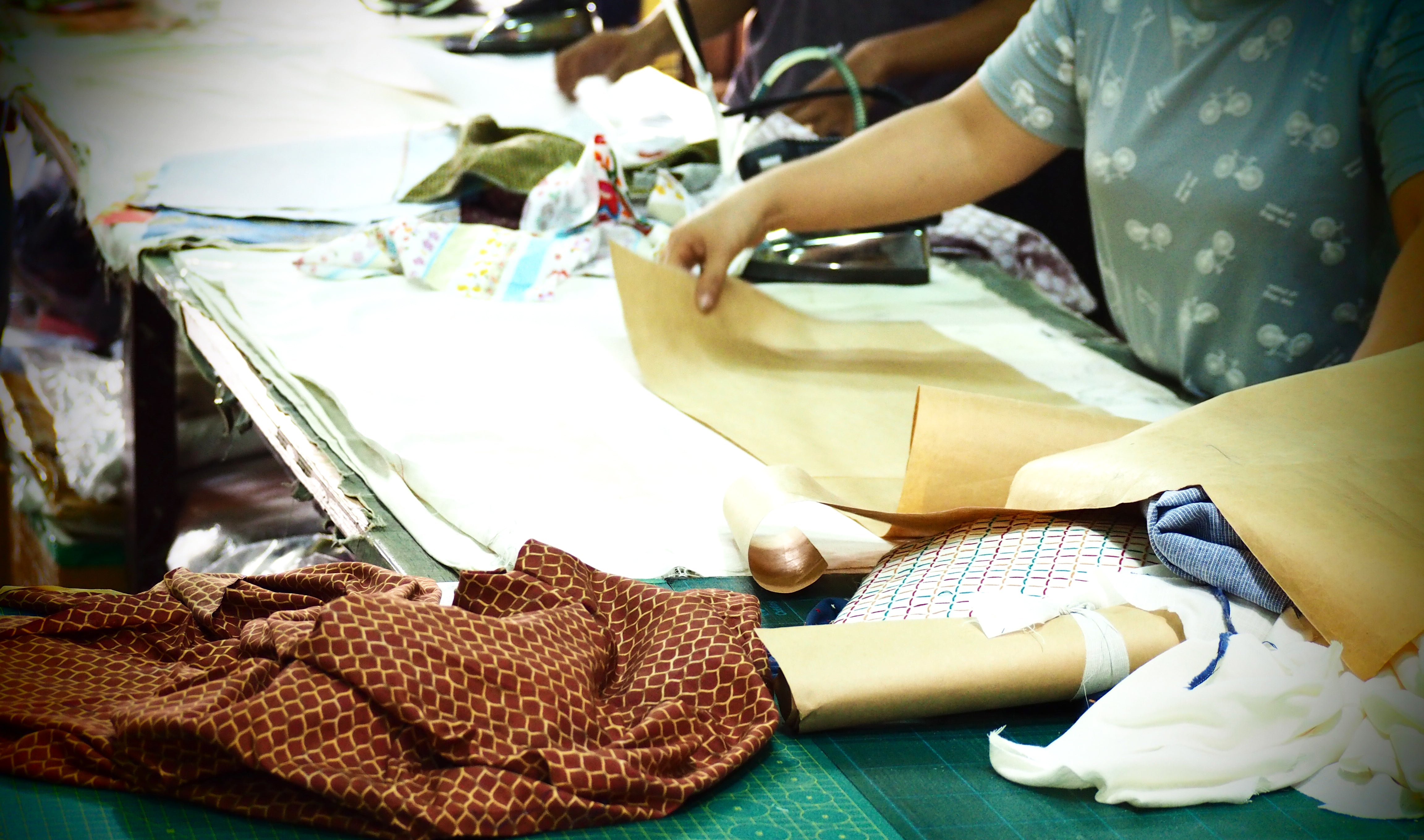Article: Unraveling Truths about Synthetic Fibers

Unraveling Truths about Synthetic Fibers
"The naked truth is always better than the best-dressed lie."
Synthetic textiles are something every one of us uses, but what you might not know are the consequences to environmental and human health, or what the clothes you're wearing are really made of. For this blog, I want to go more in-depth regarding synthetic fibers, both about the manufacturing process and the side effects.

Organic man-made fibers are categorized into; manufactured cellulose fibers, and synthetic non-cellulose fibers as shown in the above chart. There are also two other fiber types: natural cellulose fibers and wool fibers. All the above fibers are polymers: a chemical substance consisting of large molecules made from many smaller molecules. Polymers exist all around us, for example, our DNA is also a polymer. But although they are all polymer fibers they're all manufactured differently. To give you a short and sweet overview;
Synthetic fibers are produced by polymerization and are manufactured mostly from coal, oil or natural gas. I will go more in-depth about this process later.
Manufactured cellulose fibers are made from cellulose plant substances (commonly wood pulp), that are extensively and chemically processed into a pulp and then manufactured in the same way that synthetic fibers are made. Cellulose is a natural insoluble substance found in bark, wood, leaves, or other plant-based material. Rayon and Viscose are two extensively used manufactured cellulose fibers.
Natural cellulose fibers are also made from cellulose substances just like manufactured cellulose fibers. However to make natural fibers they are only processed as much as needed to clean and prep the plant fiber for use and are hence still recognized as coming from a part of the original plant which manufactured cellulose fibers are not. Natural cellulose fibers often still resemble the plant fiber they're made from, are considered more sustainable, and decompose faster.
Wool fiber is obtained from animals I.e; sheep, goats, rabbits, etc. This fiber consists of protein polymers and a small percent of lipids. It is distinctly different from natural fibers such as cotton and linen which are made from plant cellulose.
-
Now that you have an overview of the different fiber groups I want to focus on synthetic fibers which are the most prevalent and problematic globally. If you are interested in seeing which countries are the biggest importers and exporters of synthetic fibers use this link https://oec.world/en/profile/hs92/5512/.
Although synthetic fibers are the cheapest and most attractive option they also come with the nastiest strings attached. The synthetic fiber industry is one of the biggest causes of plastic pollution that many have not heard of, and is not regularly spoken about. Research has shown that manufacturing and usage have many potential risks to the environment and human health.
For those of you interested, I have written a more in-depth description of how the synthetic fibers we use every day are made. However, I'll warn you that it's a bit of a mouthful so If you're primarily fascinated by the potential environmental and health risks associated with synthetic fibers then feel free to skip ahead.
Synthetic Fiber Manufacturing
Polymerization - the first step to making synthetic fiber is creating a polymer substance. Polymerization is the process of joining single molecules together to form a chain of molecules. To achieve this chemical catalysts are added to substances such as coal, natural gas or oil to encourage the molecules to combine and create a polymer in a molten liquid form. Some common synthetic fibers in the fashion industry are; acrylic, polyester, and poly-amide which use crude oil as a starting substance.
Spinning - the molten polymer matter is then pressed through extremely small openings in a spinneret which is essentially a sieve. Upon exiting the spinneret, the filaments (endless yarn) produced are either gathered to a filament yarn and spooled or joined to form tows depending on the desired purpose of the end fiber. Spinning can be done by three different methods in manufacturing synthetic fibers, the method depends on the polymer being used. You can see the different methods in the below diagram.

Drawing/Stretching - is the process of stretching the filaments created during spinning which will, in turn, pull the long polymer chains to align themselves in the longitudinal direction. The chains align themselves parallel closely to each other and the cross-forces between these chains improve the tenacity and the filaments become stronger, resulting in stronger and more durable textiles.
Texturing - is done in varying degrees and using different methods depending on what the fiber is meant to look like when finished I.e. to make a rough surface on a fabric, or create a similar texture to natural wool. The texturing procedure is used for visual effects like mentioned before and/or to improve elasticity in the yarn. The machinery and process for texturing changes depending on the type of texture being applied. I.e gear crimping is used to create a wool-like texture.
Finishing - during the finishing steps, the fibers are chemically treated to improve absorption of dyes applied, increase fiber stability, make future bleaching easier, etc. The dyeing process itself is done with a highly toxic variety of chemicals. Dyeing can also be done at earlier stages in the production. Once dyeing is complete a final mixture of chemicals are added for finishing effects such as:
- Easy-care (improvement of crease and shrink resistance)
- Softening
- Filling, stiffening
- Repellents (oil, water, and soil repellents)
- Flame retardants
- Antistatic finishing
- Non-slip finishing
- Anti-microbiotic finishing
Environmental Consequences
Research has shown that there are roughly 1900 chemical substances that are known to be used in textile production. This is a staggering amount of chemicals to wrap your head around and it doesn’t even include all chemicals involved as many are considered confidential to the manufacturer and are therefore unknown to the general public. Out of these 1900 chemicals, 165 have been classified as having potentially hazardous properties, and as many of the remaining chemicals have not been investigated it is hard to say if they are harmful or not. About 30% of the 165 chemicals classified as hazardous have long-term harmful effects on the environment. The other 70% have varying harmful effects on human health which I will take about more later.
Water pollution is the biggest environmental concern regarding the textile industry. Throughout the manufacturing process, large masses of wastewater are disposed which consist partly of highly concentrated residual toxic chemicals from; the equipment, preparation agents, spinning, fiber production, dyeing/printing, and chemical byproducts created. Most of these substances have a low rate of biodegradability I.e petroleum. There is not yet a way to take care of the textile-related chemicals which end up in sewage plants, so there is no way to keep the harmful substances out of the aquatic environment. Polluted water will also affect marine health including seafood which impacts human health.
Consumers using synthetic textiles are also continually exposing the environment to harmful toxins mainly when laundering or disposing of textiles. Bleaching and home dyeing will also release chemicals. To put things into perspective more than 700,000 microscopic fibers could be leached into wastewater during each use of a 6 kg domestic washing machine. Chemical residues from textile fibers make up a large portion of the dust that we have in our homes, which usually when emptying our vacuum cleaning bags is also leeched into the surrounding environment.
In addition to this, toxic sludge from sewage plants is also reintegrated into the soil where the harmful chemicals are absorbed by crops and terrestrial ecosystems, which may result in exposure to humans via food. If waste products are burnt the gases will affect the entire global ecosystem. Unfortunately, there is no good way to dispose of synthetic fibers.
Human Health Risks
As mentioned before an estimate of 70% of harmful chemicals used impact human health. The workers in textile manufacturing factories have the most extreme negative health risks ranging from acute poisoning to more long term effects including cancer due to their extreme exposure to toxins.
Consumers are not exposed to the same level of toxic chemicals as the factory workers, but because the textiles release residue chemicals their health is still at risk. The most common health impact is allergic reactions to chemicals used in textile manufacturing which consumers are exposed to in small doses, studies have shown that a minimum of 1% are allergic to chemicals used in textile dyes. Residual chemicals in textiles are absorbed by humans primarily via skin exposure, indirect skin and oral exposure to dust indoors (I.e inhaling dust), and indirect oral exposure eating contaminated food. Absorption via the skin is very minimal when compared to oral absorption. Which is why children are most vulnerable to being directly exposed to these harmful chemicals due to their proneness to putting everything including clothing and blankets in their mouths.
The risks for longer-term health impacts due to exposure of substances with CMR properties (substances classified as carcinogenic (cancer-causing), mutagenic, or toxic for reproduction) could result in high costs for individuals and society as a whole.
The amount of residual hazardous chemicals found in textiles is largely dependent on the manufacturing process as every textile factory uses a different mixture of partly confidential chemicals. There is also a limited amount of research which has been conducted making it near impossible to measure accurately.
Here are some examples of chemicals used in synthetic fibers and the potential health impacts to give you an idea of what we're dealing with;
- Carbon dioxide - emitted from Rayon's filaments can cause a headache, nausea, muscle pain, and insomnia
- Acrylonitrile - found in acrylic, is toxic in low doses and one of the causes of breast cancer in women
- Caustic soda, sulfuric acid, and formaldehyde - these chemicals are used to manufacture nylon and potential side effects include dermatitis, dizziness, headaches, and spinal pain
Solution
Minimize not eliminate. This is my opinion, not everyone will agree but that's okay. For example, create new and enforced regulations that prevent, or minimize the use of known hazardous chemicals. As well as conduct more research on the side effects on human and environmental health caused by synthetic textiles. As a consumer, it’s best to avoid these fibers as much as we can, where possible buy natural fibers instead. Buying zero synthetic fibers is hard, but buying less is easy. What consumers don’t buy factories won’t make. It’s up to us.
Sources:
https://www.kemi.se/global/rapporter/2013/rapport-3-13-textiles.pdf
https://www.britannica.com/technology/man-made-fiber/Chemical-composition-and-molecular-structure
https://www.academia.edu/11623172/A_study_on_the_synthetic_fibers_and_its_production_process




